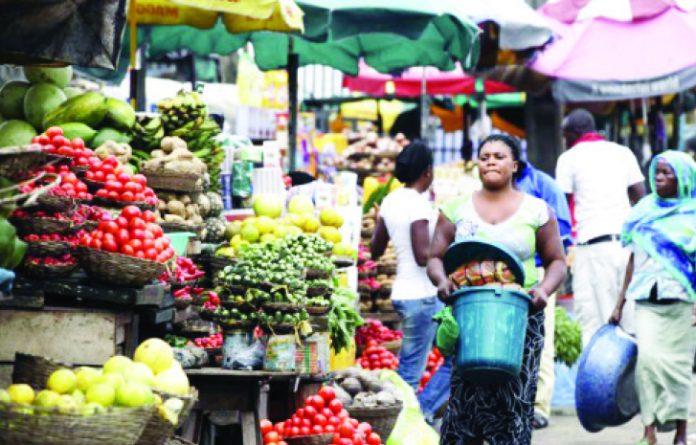Getty Images
XN Iraki, University of Nairobi
Kenya’s President William Ruto, sworn in as new President on 13 September 2022, has inherited an economy saddled with debt, inflation, joblessness and national pessimism. The International Monetary Fund has also added to his pain: it recently asked Kenya to broaden its tax base and scrap the fuel subsidy.
Broadening the tax base will mean bringing more “hustlers” – Ruto’s core support base of informal workers – into the tax net. That could annoy his political supporters. Scrapping fuel subsidies will raise prices and lead to further inflation, something that Ruto campaigned against. The latest fuel price review, that has resulted in high fuel prices, shows Ruto is serious on removing subsidies.
Ruto made the economy the main focus of his campaign, promising Kenyans a radical transformation if he won. But in politics, promises and reality are two different things. Implementing a manifesto will require money and new economic structures, and even face resistance from defenders of the status quo.
Some decisions to turn the economy around can be taken immediately, others later. One reality Ruto must face is that it takes time for most economic policy actions to make a noticeable difference.
This lag can be a political problem, more so when an election is based on great expectations and big promises. For example, lowering taxes on goods and services does not immediately translate into lower consumer prices, because old stocks must be sold first. In addition employers rarely raise or lower wages just because there is inflation or a change in market conditions.
Similarly, cutting interest rates does not lead to an immediate boost in economic activity. Businesses and consumers take time to decide how much to borrow and whether to invest or consume to create demand.
But voters want instant results because they voted instantly! Explaining the lag to ordinary voters should be the starting point of any politician, using a language and tone that does not make it sound like an excuse.
Turning the economy around
Based on Ruto’s preference for bottom-up economics, manifesto and inaugural speech, here are five areas he should first focus on (in no order of merit) to rekindle the economy.
- Agriculture. In his manifesto, Ruto prioritised five sectors, starting with agriculture. Other sectors include micro, small and medium enterprises; housing and settlement; healthcare and digital superhighway; and the creative economy. Prioritisation of agriculture is by no chance accidental; Ruto was once a minister for agriculture. Many voters earn a living from farming. And a hungry nation is an angry nation. Ruto must balance the interests along the value chain, from farmers to consumers.
Agricultural productivity has been the main challenge because of land fragmentation. Improvement in productivity takes time; from seed production to logistics and even raising the purchasing power of consumers. Subsidies are the easiest option for addressing rising food prices. But recent maize subsidies demonstrated why they weren’t the best solution.
Prices of flour never came down substantially, and there were shortages. Is cheaper fertiliser promised by President Ruto subsidised? Increasing competition and efficiency along the value chain is a better option. Agriculture passes the bottom-up test as many citizens at the bottom of the pyramid would benefit.
- Micro, small and medium enterprises or the “hustler economy”. The new administration has promised this segment a fund of KSh50 billion (US$500 million) per year. The sources of funds and the allocation mechanisms have not yet been announced. It should learn from the Uwezo Fund, which was set up by the outgoing administration in 2014 to help young people, women and people with disabilities to get finance for entrepreneurship. Its results are mixed, recording low loan uptake and high default rates.
- Housing and settlement. Addressing the housing shortage , particularly in urban areas, is another bottom-up initiative that would benefit lots of citizens. One curious proposal in Ruto’s manifesto is to increase mortgage accounts to 1,000,000, without giving a clear timeline. This is a very bold move because the country has only 30,000 mortgage accounts at the moment in a population of 54 million.
The proposal suggests market forces rather than the the government will drive the housing market. But the interest rates need to come down for more citizens to afford the mortgages. To bring down interest rates, Kenya needs more banks to spur competition. The current number of banks is not competitive enough to lower interest rates and manage that growth.
- Healthcare. A healthy nation is a productive nation. A national insurance system devoid of waste and nepotism could easily fund Kenya’s healthcare. This is a very young nation. Many Kenyans are not covered by health insurance. About 80% of Kenyans are in the informal sector and affordable health is out of their reach. Social security coverage is generally low in the informal economy: 75.7% of enterprises
don’t pay contributions for their workers into the National Social Security Fund and National Hospital Insurance Fund. - Digital superhighway and creative economy. This appeals to the youth and Kenya has a head-start on it. The country must go beyond social media to real work like gaming, outsourcing, software engineering and artificial intelligence. Will Ruto return tablets to schools?
These sectors closely mirror the Big Four Agenda of the last government, where Ruto was the deputy president. Some are borrowed from Vision 2030, the National Strategy of the late president Mwai Kibaki.
Kenyans and others will be watching to see how Ruto’s economics will differ from those of former presidents Jomo Kenyatta, Daniel arap Moi, Mwai Kibaki and Uhuru Kenyatta.
XN Iraki, Associate Professor, Faculty of Business and Management Sciences, University of Nairobi
This article is republished from The Conversation under a Creative Commons license. Read the original article.

